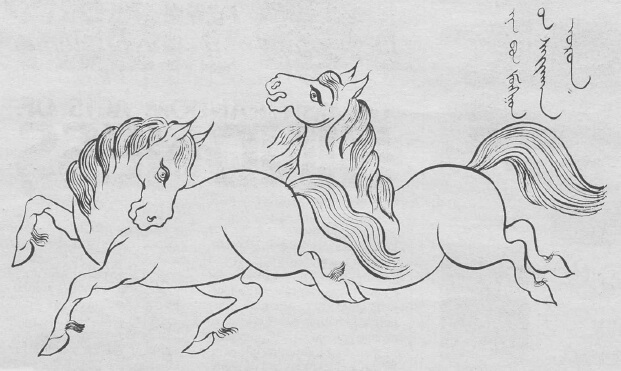| The following article is from the Winter, 1993 issue of the Snow Lion Newsletter and is for historical reference only. You can see this in context of the original newsletter here. |

by Jamie Kempton
Columbia News Service
NEW YORK-Batsaihan Purveegiin didn't recognize the artistic talent that lay in his hands until he almost lost the use of those hands.
The 25-year-old former machinist was badly burned seven years ago in an explosion at a power company in his hometown of Ulan Bator, Mongolia.
As part of his rehabilitation, Batsaihan was encouraged to draw to regain manual dexterity. He found that reproducing scenes and images on paper came easily to him.
With the help of the Mongolian Prime Minister, Dasniin Byambasuren, Batsaihan received a $20,000 loan from the Mongolian government to attend the Arts Students League (ASL) of New York, a 116-year-old school in Manhattan that has nurtured scores of renowned artists, including Jackson Pollock, Norman Rockwell and Roger Tory Peterson.
Batsaihan is the first Mongolian to come to the United States to study art, said Solongo Sukh-Ochiryn, a member of the Mongolian Mission to the United Nations.
Batsaihan's opportunity to develop his artistry in America was made possible after an initial visit here to compete in the New York City Marathon in 1990. He competed for a Mongolian chapter of the Achilles Track Club, a worldwide organization for disabled runners.
Because of the assistance he received from Dick Traum, the president of Achilles, Batsaihan persuaded his power company to donate 20,000 tugriksabout $3,000to the club. Traum distributed the money equally between two Achilles chapters in Mongolia.
In his first year at the four-year art school, Batsaihan has impressed instructors and advisors with his precise, colorful renderings of Mongolian wildlife, traditional culture, and religious ritual.
His work is unique; nobody else paints this subject matter because nobody else knows this subject matter, said Leo Manso, an ASL teacher and a contemporary painter whose work has been exhibited in 40 museums nationwide.
As Mongolia has gained political freedom over the past two years, nationalism and a spirit of openness has begun to flourish, emboldening Batsaihan to seek Byambasuren's assistance in gaining acceptance to an American school.
He liked my work and helped me very much, said Batsaihan, who now lives in Brooklyn. Things are changing now in Mongolia. There is talk about more traditional things again.
Among those resurfaced traditions are Buddhism, the religion of Mongolians for centuries, and interest in Genghis Khan, the 13th-century warrior who united the Mongol tribes and whose empire controlled much of Europe and Asia.
Buddhism and Genghis Khan are fertile subjects of Batsaihan's paint brush, as are scenes drawn from his boyhood days in the rural, mountainous region of north central Mongolia.
His work is very beautiful to look at, said Michael Burban, an ASL instructor. It moves me.
Batsaihan paints on cotton, paper, canvas or silk. He uses a mixture of egg yolks and water to bind the color of his dry paint pigments. The water-based combination produces a very permanent artwork, Manso said.
Batsaihan has not attempted to sell much of his art, but when he has it has been bought quickly. When he exhibited some paintings in the New York Road Runners Club in Manhattan, he earned $120roughly the average monthly salary in Mongoliain a couple of hours, with paintings priced from $5 to $20.
Besides the Mongolian government loan, Batsaihan also has received a partial scholarship from the ASL. When his funding is exhausted, he hopes to support himself by illustrating children's books and possibly selling more of his art.
After completing his schooling at the ASL, Batsaihan intends to return to Mongolia as a professional artist.
If you would like more information about Batsaihan and his work contact: Wen Schoen Tsai, Tai Endicott Inc., One North Page Ave., Endicott, NY 13760. Tel. 607-748-6042.

